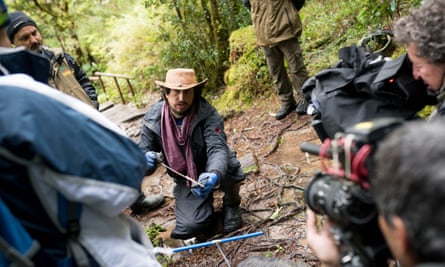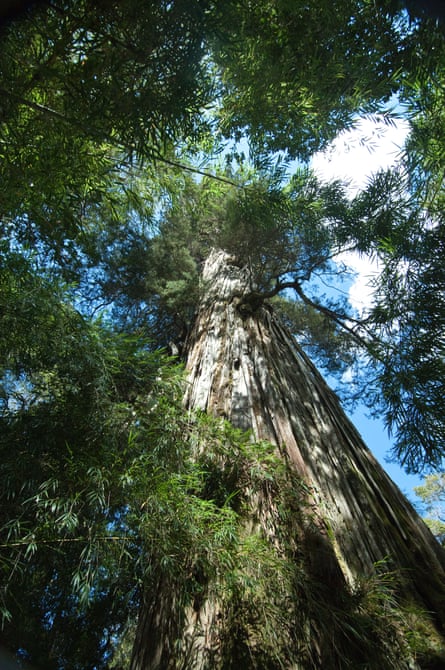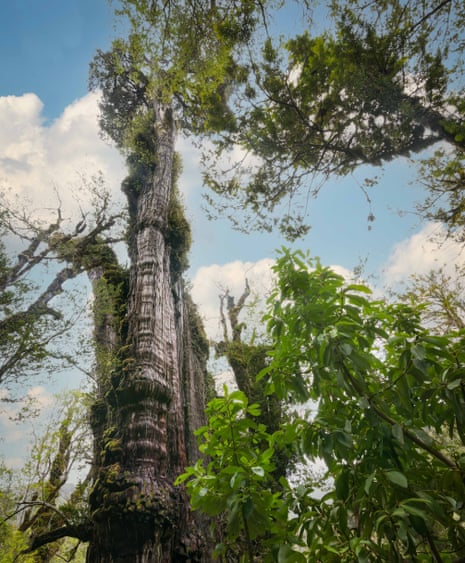In a secluded valley in southern Chile, a lone alerce tree stands above the canopy of an ancient forest.
Green shoots sprout from the crevices in its thick, dark trunks, huddled like the pipes of a great cathedral organ, and water streams down its lichen-streaked bark on to the forest floor from bulbous knots in the wood.
“It was like a waterfall of green, a great presence before me,” remembers the climate scientist Jonathan Barichivich, 41, of the first time he encountered the Gran Abuelo, or “great-grandfather”, tree as a child.
Barichivich grew up in Alerce Costero national park, 500 miles (800km) south of the capital, Santiago. It is home to hundreds of alerces, Fitzroya cupressoides, slow-growing conifers native to the cold, wet valleys of the southern Andes.
“I never thought about how old the Gran Abuelo could be,” he said. “Records don’t really interest me.” However, Barichivich’s groundbreaking study has shown the 100ft (30-metre) giant could be the world’s oldest living tree.
In January 2020, he visited the Gran Abuelo with his mentor and friend, the dendrochronologist Antonio Lara, to take a core sample from the trunk.
They were able to reach only 40% into the tree as its centre is likely to be rotten, making a complete core unattainable. Yet that sample yielded a finding of about 2,400 years.
Undeterred, Barichivich set about devising a model that could estimate the Gran Abuelo’s age. Taking the known ages of other alerces in the forest and factoring in climate and natural variation, he calibrated a model that simulated a range of possible ages, producing an astounding estimate of 5,484 years old.
That would make it more than six centuries senior to Methuselah, a bristlecone pine in eastern California recognised as the world’s oldest non-clonal tree – a plant that does not share a common root system. Some clonal trees live longer, such as Sweden’s Old Tjikko, a Norway spruce thought to be 9,558 years old.

Barichivich believes there is an 80% chance the tree has lived for more than 5,000 years – but some colleagues have poured scorn on the findings. They assert that complete, countable tree ring cores are the only true way of determining age.
The climate scientist hopes to publish his research early next year. He will continue to refine his model but waves away the “colonialism” present in the field.
“Some colleagues are sceptical and cannot understand why we have revealed the finding before formally publishing it,” he said. “But this is post-normal science. We have very little time to act – we cannot wait one or two years, it could already be too late.”
Barichivich believes ancient trees may help experts understand how forests interact with the climate.
“The Gran Abuelo isn’t just old, it’s a time capsule with a message about the future,” he said. “We have a 5,000-year record of life in this tree alone, and we can see the response of an ancient being to the changes we have made to the planet.”
In January, Barichivich, who works at the Laboratory for Climate and Environment Sciences and Environment in Paris, won a €1.5m European Research Council starting grant he describes as the “holy grail” for a scientist.
He has embarked on a five-year project to assess the future capacity of forests to capture carbon, hoping to add tree-ring data from thousands of sites around the world into climate simulations for the first time.
More than a third of the planet’s vegetated surface is covered by forests, capturing carbon dioxide during photosynthesis, but current models are only able to make estimates for 20 or 30 years into the future.
By adding data for xylogenesis, the formation of wood, Barichivich believes he could provide 100-year predictions for climate change – and revolutionise our ability to understand and mitigate its effects.
“If tree rings are a book, then for 40 years everyone’s just been looking at the cover,” he said.
‘Bit by bit, the tree is dying’

In an office surrounded by varnished samples, fragile cores and wood shavings, Barichivich’s mentor Antonio Lara, 66, has spent his career working to reconstruct temperature, precipitation and watershed levels throughout history.
Lara, a professor at the Faculty of Forest Sciences and Natural Resources at Chile’s Austral University in the southern city of Valdivia, has been able to prove that alerces can absorb carbon from the atmosphere and trap it for between 1,500 and 2,000 years in standing dead trees. Buried alerce trunks can hold carbon for more than 4,000 years.
He has also pinpointed exact climatic events by translating tree rings into numbers, which can then be read like a barcode. “The great-grandfather tree is a miracle for three reasons – that it grew, that it survived, and then that it was found by Jonathan’s grandfather,” Lara said.
In the mid-1940s, Barichivich’s grandfather, Aníbal Henríquez, arrived from the southern city of Lautaro to work for the forestry companies felling the lahuan, as the alerces are known in the Indigenous language Mapudungun, his native tongue.
He went on to become the park’s first warden, but many giant alerce trees had already fallen victim to loggers before Chile made it illegal to cut them down in 1976.
Alerce shingle was used as currency by local populations throughout the 1700s and 1800s and the wood was commonly used in construction. The famous Unesco-protected wooden churches on the island of Chiloé are built from alerce trunks.
Henríquez happened upon Gran Abuelo while out on a patrol in the early 1970s. Although he was reluctant to disclose the find at first, word soon got out and people began to arrive: now, more than 10,000 tourists trek down to the small wooden viewing platform next to the tree each summer.

Other alerces in the valley fell victim to loggers or forest fires, leaving the gnarled tree standing alone. “Bit by bit, the tree is dying,” said Marcelo Delgado, Barichivich’s cousin who works in the park as one of five full-time rangers. “People jump down from the platform to peel off bark to take as a souvenir.”
Footfall around the base of the tree has also damaged the thin layer of bark on its roots, affecting nutrient uptake. After 29 other trees were vandalised by tourists, Chile’s national forestry corporation, which manages the country’s national parks, closed the trail indefinitely.
Barichivich hopes that by showing that Gran Abuelo is the world’s oldest tree, he could raise the alarm about the urgency with which we must protect the natural world. While the scope of his research is far broader, Barichivich insists the national park in which he grew up is where he belongs.
When he was eight years old, his grandfather disappeared on a routine patrol out in the snow. His body was found two days later. Another uncle, also a park ranger, later died in the park.
“It seems like it’s a family tradition,” Barichivich said. “The same fate probably awaits me, dying with my boots on out in the forest. But first I want to unlock its secrets.”
